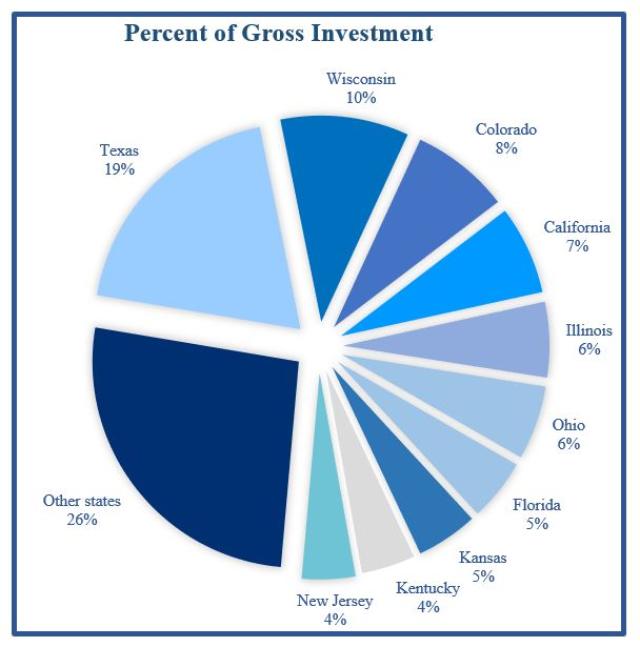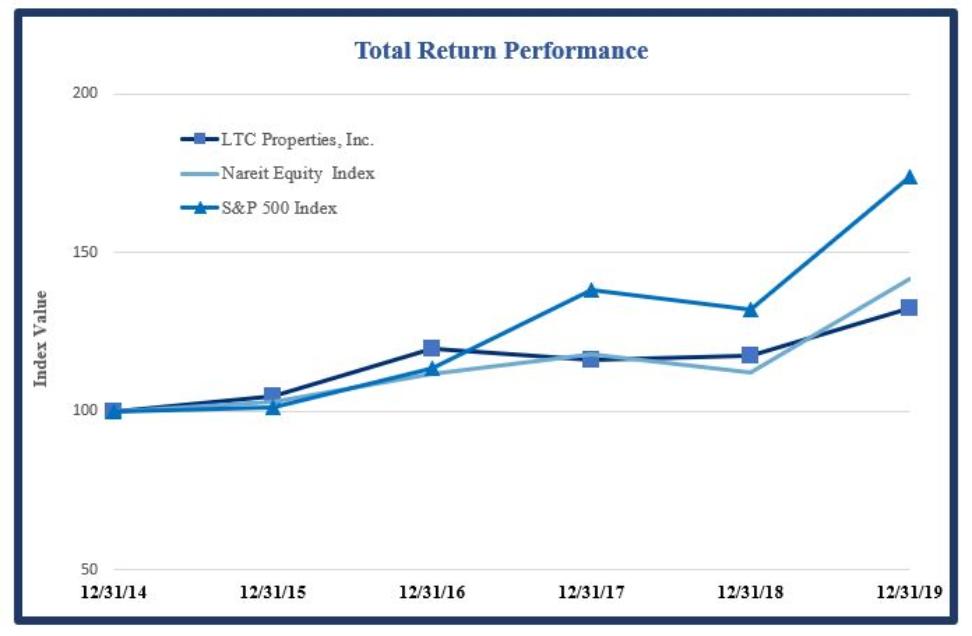lease agreement were $1,287,000.
As a lessor, our properties are leased subject to non-cancelable operating leases. Each lease is a triple net lease which requires the lessee to pay all taxes, insurance, maintenance and repairs, capital and non-capital expenditures and other costs necessary in the operations of the facilities. Upon adoption of ASC 842, we recorded real estate taxes that are reimbursed by our operators as Rental Income with a corresponding Property tax expense in the Consolidated Statements of Income and Comprehensive Income. For the year ended December 31, 2019, we have recognized $15,998,000 in Rental Income related to reimbursement of real estate taxes from our operators.
Furthermore, upon adoption of ASC 842, we assessed the probability of collecting substantially all of our lease payments through maturity. As previously reported, we have been monitoring Anthem Memory Care (“Anthem”), Thrive Senior Living, LLC (“Thrive”), Preferred Care, Inc. (“Preferred Care”) and Senior Care Centers, LLC (“Senior Care”) due to cash flow concerns, performance concerns and/or bankruptcy filing. In conjunction with adoption of ASC 842, we evaluated our straight-line rent receivable and lease incentive balances related to the noted operators and determined that we do not have the level of collectibility certainty required by the standard to record the straight-line rent receivable. Accordingly, we wrote-off the straight-line rent receivable and lease incentive balances associated with these leases. Also, we wrote-off our 1% general straight-line rent receivable reserve. These balances totaled $42,808,000 and were written-off to equity effective January 1, 2019 as required by ASC 842. Subsequently, if collectibility of substantially all of the lease payments through maturity is not probable, all or a portion of the straight-line rent receivable and other lease receivables may be written off, and the rental income recorded during the period would be limited to lesser of the income that would have been recognized if collection were probable, and the lease payments received. Our assessment of collectibility of leases includes evaluating the data and assumptions used in determining whether substantially all of the future lease payments were probable based on the lessee’s payment history, the financial strength of the lessees, future contractual rents, and the timing of expected payments.
During the year ended December 31, 2019, we received cash rent from Anthem, Thrive, Preferred Care and Senior Care. The total amount of rental income received from these operators was $33,238,000 and is included in Rental Income on the Consolidated Statements of Income and Comprehensive Income. Of the $33,238,000 received, $27,225,000 of the cash payments received relate to amounts previously written-off in transition to ASC 842 (“Recoveries”) during the twelve months ended December 31, 2019.
Federal Income Taxes. LTC qualifies as a REIT under the Internal Revenue Code of 1986, as amended, and as such, 0 provision for Federal income taxes has been made. A REIT is required to distribute at least 90% of its taxable income to its stockholders and a REIT may deduct dividends in computing taxable income. If a REIT distributes 100% of its taxable income and complies with other Internal Revenue Code requirements, it will generally not be subject to Federal income taxation.
For Federal tax purposes, depreciation is generally calculated using the straight-line method over a period of 27.5 years. Earnings and profits, which determine the taxability of distributions to stockholders, use the straight-line method over 40 years. Both Federal taxable income and earnings and profits differ from net income for financial statement purposes principally due to the treatment of certain interest income, rental income, other expense items, impairment charges and the depreciable lives and basis of assets. At December 31, 2019, the tax basis of our net depreciable assets exceeds our book basis by approximately $25,436,000 (unaudited), primarily due to an investment recorded as an acquisition for tax and a mortgage loan for GAAP, and to differences previously mentioned above.
The FASB clarified the accounting for income taxes by prescribing the minimum recognition threshold a tax position is required to meet before being recognized in the financial statements. The guidance utilizes a two-step approach for evaluating tax positions. Recognition (step one) occurs when a company concludes that a tax position, based solely on its technical merits, is more likely than not to be sustained upon examination. Measurement (step two) is


